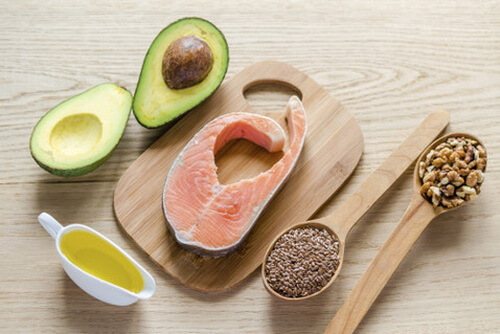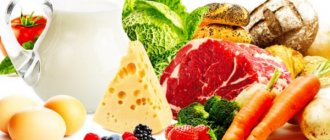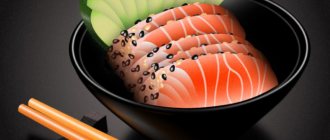What do I need to know about the different types of fat in food?
- Limit unhealthy fats. A diet high in cholesterol, saturated fat and trans fat can cause unhealthy cholesterol levels. Unhealthy cholesterol levels increase the risk of heart disease. Cholesterol: Limit cholesterol intake to 200 mg per day. Cholesterol is found in meat, eggs and dairy products.
- Saturated fat: Limit saturated fat to less than 7% of your daily calories. Ask your dietitian how many calories you need each day. Saturated fat is found in butter, cheese, ice cream, whole milk and palm oil. Saturated fat is also found in meats such as beef, pork, chicken skins and processed meats. Processed meats include sausage, hot dogs and bologna.
- Trans fats: Avoid trans fats as much as possible. Trans fats are used in fried and baked foods. Products labeled as fat-free may contain up to 0.5 grams of fat per serving.
- Monounsaturated fats. They are found in avocados, nuts and vegetable oils such as olive, canola and sunflower oil.
Types and features
All fats that enter the human body with food are divided into two categories:
- Saturated ones are poorly absorbed and have a negative impact on health. Thus, regular consumption of food with saturated fats leads to the formation of blood clots in blood vessels and increases the risk of weight gain. In addition, to dissolve such elements, the stomach has to work hard and expend large amounts of energy. At the same time, excessive loads are placed on the body as a whole. But foods containing saturated fats should not be excluded from the diet - they are rich in vitamins. The main sources are pork, beef, lamb and other “representatives” of the diet.
- Unsaturated are fats whose distinctive feature is considered to be in liquid form. For this reason, they are absorbed easier and faster. The composition contains vitamins and elements that cleanse blood vessels.
It is worth noting that any fat leads to an increase in cholesterol. In turn, cholesterol can be bad (“clogs” the circulatory system) and good — on the contrary, it cleanses blood vessels. The peculiarity of unsaturated fats is that they reduce the level of bad cholesterol.
Unsaturated fats also come in two types:
- Monosaturated - accelerate the production of cholesterol that is beneficial for the body.
- Polysaturated - enriched with useful elements, one of which is Omega-3.
As a rule, polyunsaturated and monosaturated fats are always present in food at the same time. The only thing that changes is the proportion in which they are found in products. The main sources are nuts, seeds, vegetable oils.
Trans fats are substances that are separated into a separate type. What foods contain this type of fat? First of all, we are talking about food that undergoes special processing. The main sources are French fries, cookies, sausage, and so on. The downside of trans fats is the lack of benefits for the body and negative effects on health. Substances are obtained by processing vegetable oil, after which the latter passes into solid form. In addition, the manufacturer often replaces expensive fats with this product, which reduces production costs and extends the shelf life of the product.
What foods should I limit or avoid?
- Grains: Snacks made from partially hydrogenated oils, such as chips, regular crackers, and butter-flavored popcorn
- High-fat baked goods such as cookies, croissants, donuts, pies, cookies and pastries
- Whole milk, 2% milk, yogurt and whole milk ice cream
- High-fat cuts of meat (t-bone steak, regular hamburger, and ribs)
- Roasted vegetables or vegetables in creamy or rich sauces such as cream or cheese sauces
- Butter, margarine
Mushrooms
Myasnikov has childhood memories associated with mushrooms: the doctor’s grandfather often returned home with a basket of white mushrooms, and relatives called mushrooms “forest meat” and convinced young Alexander of their benefits. Only when the specialist received his education did he understand: the microelements needed for health are not found in the gifts of nature.
“Mushrooms have no dietary value. No proteins, no vitamins, no fiber. But there may be such elements! After all, the mushroom absorbs everything bad from the atmosphere,” said the presenter in the program “About the Most Important Thing.”
Mushrooms also become a harmful product due to common methods of preparing them - salting or frying - as well as due to their chitin content, which reduces digestibility. It is especially dangerous to eat them raw, again due to their ability to accumulate poisons and toxins.
What products should we include?
- Grains: Whole grain breads, cereals, pasta and brown rice
- Fat crackers and pretzels
- Fresh, frozen or canned vegetables (unsalted or low sodium)
- Skim (skim) or 1% milk
- Chicken or turkey without skin
- Unsaturated oil such as canola, olive, peanut, soybean or sunflower oil
How can you reduce fatty foods?
- Read food labels before purchasing food. Choose foods that contain less than 30% of your calories from fat. Choose low-fat or low-fat dairy products. Remember that low fat does not mean no calories. These foods still contain calories, and too many calories can lead to weight gain.
- Trim fat from meat and avoid fried foods. Remove all visible fat from meat before cooking it. Remove skin from poultry. Do not fry meat, fish or poultry. Instead, bake, broil, boil or broil these foods. Avoid fried foods. Eat baked potatoes instead of French fries. Steam vegetables instead of frying them in butter.
- Add less fat to your food. Use imitation bacon bits on salads and baked potatoes instead of regular bacon bits. Use low-fat or low-fat salad dressing instead of regular dressing. Use low-fat or butter-flavored butter instead of regular butter or margarine on popcorn and other foods.
Daily requirement
Having figured out which foods contain a lot of fat, it is worth learning an equally important nuance - the daily requirement for a person. On average, an adult needs 100-150 grams. At the same time, the amount of fat in the diet should not be lower than 30 percent (based on the BJU ratio). Calorie content is calculated taking into account the fact that there are nine kilocalories per gram of fat. Along with food, the body should receive (at the rate of 30%):
- 20% - unsaturated;
- 10% - saturated fats.
In the presence of heart disease, the dosage should be calculated individually.
For some people, the fat requirement is higher. They need to know which foods are rich in fats in order to better saturate their diet with them. This category includes:
- Pregnant and nursing mothers. At this time, energy is spent on the formation of the fetus.
- Representatives of professions associated with heavy physical labor. Here, the advantage of high fat content is quick saturation and a high number of calories.
- Wrong diet. If you are deficient in fat-soluble vitamins, your risk of health problems increases.
People should also know what fats contain and supplement their diet with such products if they lack energy, have decreased libido, or during the cold season. The last factor is easy to explain. In cold weather, the body is forced to spend more energy to warm up the body, so high-calorie foods help maintain heat for a long time.
There are situations when the need for fat decreases. It is worth highlighting here:
- Performing work in which greater emphasis is placed on mental work. In such a situation, it is recommended to lean on carbohydrate, but not fatty foods.
- Living in countries where hot climates prevail.
- Excessive body weight. People who are obese should limit their fat intake, but should not eliminate it from their diet.
It is worth remembering that the body copes with vegetable fats faster. This is easily explained by the special chemical bonds of products that are not resistant to the effects of gastric juice. Most often, vegetable fats are used to obtain large amounts of energy. As for animals, they provide a feeling of fullness due to slower digestion. In practice, women consume mostly plant-based fats. While male representatives prefer animal fats (which products contain them are discussed above).

How can I reduce fat in recipes?
Substitute fatty or low-fat ingredients. This may make baked goods drier than usual. You may need to use a low-fat spread for cooking on pans to prevent food from sticking. You may also need to adjust the amount of other ingredients, such as water, in the recipe. Try this:
- Use low-fat or light margarine instead of regular margarine or spread
- Use lean turkey or chicken breast or lean ground beef (less than 5% fat) instead of hamburger.
- Add 1 teaspoon of canola oil to 8 ounces of skim milk instead of using cream or half and half.
- Use shredded zucchini, carrots or apples in your bread instead of coconut.
- Instead of cream cheese, use low-fat cottage cheese, regular tofu, or low-fat ricotta cheese.
- Use 1 egg white and 1 teaspoon olive oil, or ¼ cup low-fat egg substitute instead of a whole egg.
- Substitute half the butter called for in the recipe with applesauce when you bake. Use 3 tablespoons cocoa powder and 1 tablespoon olive oil instead of the baking chocolate square.
How can I increase my fiber?
Eat enough high-fiber foods to get 20 to 30 grams of fiber each day. Slowly increase your fiber intake to avoid stomach cramps, gas and other problems.
- Eat 3 servings of whole grains every day. Eat whole grain breads, such as whole wheat bread. Whole wheat, whole wheat flour, or other whole grains must be listed as the first ingredient on the food label. Replace white flour with whole wheat flour or use half of each in recipes. Whole wheat flour is heavier than white flour, so you may need to add more yeast or baking powder.
- Eat high fiber cereal for breakfast. Oatmeal is a good source of soluble fiber. Look for grains that have bran or fiber in their name. Choose whole grain foods such as brown rice, barley and whole wheat pasta.
- Eat more beans, peas and lentils. For example, add beans to soups or salads. Eat at least 5 cups of fruits and vegetables every day. Eat fruits and vegetables with the skin on because the skin is high in fiber.
Which fats are harmful and which are healthy: what to eat
We figured out its usefulness and what should be eliminated from the diet forever. Now it is important to understand how to create a menu in order to safely lose weight and feel good during this difficult process.
We suggest the following rules:
- per day you need to consume 1 gram of lipids per kilogram of body weight;
- 70% of this norm should be unsaturated fatty acids, and 30% will be the share of natural saturated ones;
- The recommended ratio of Omega-3 to Omega-6 is 1:4.












